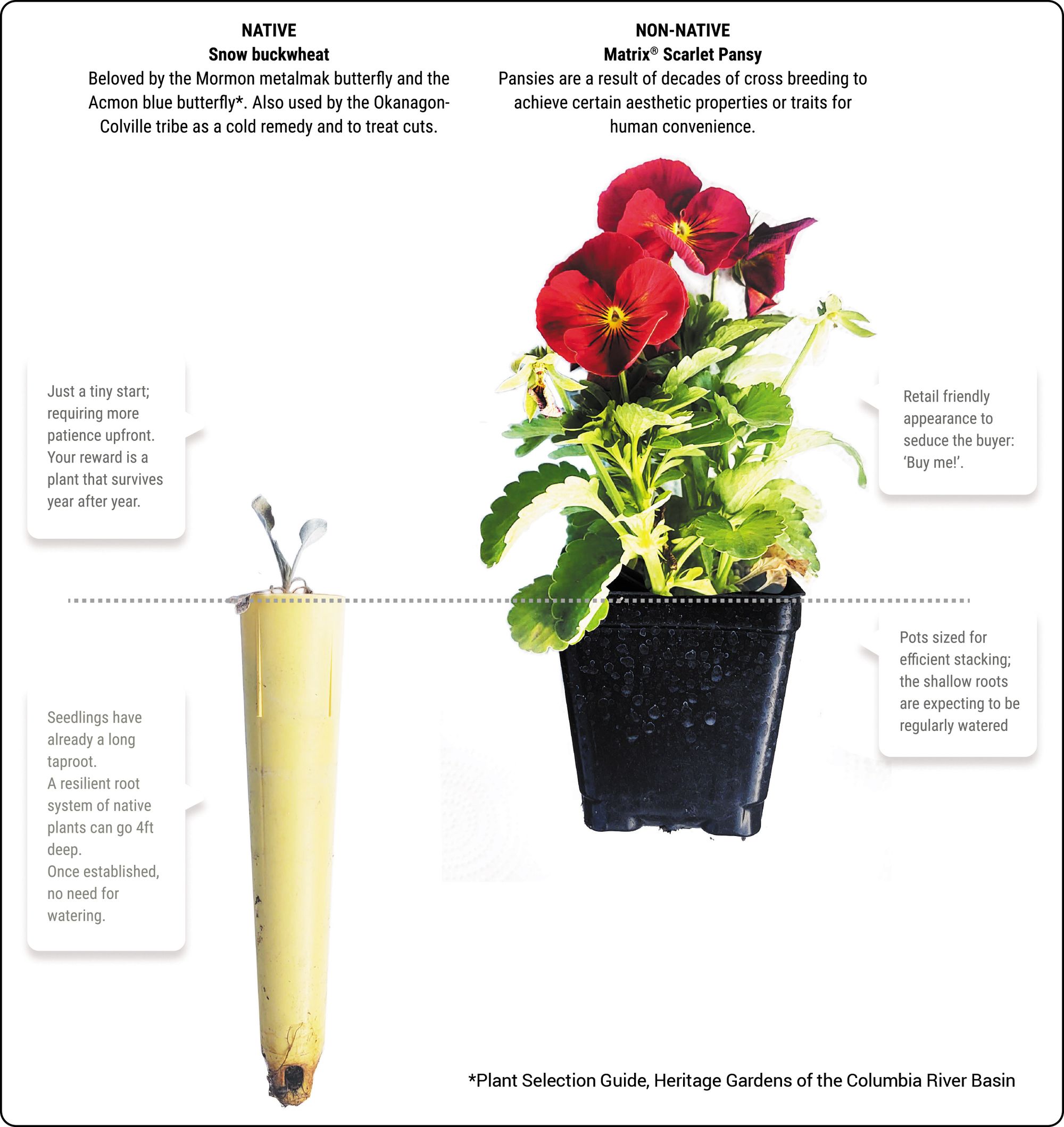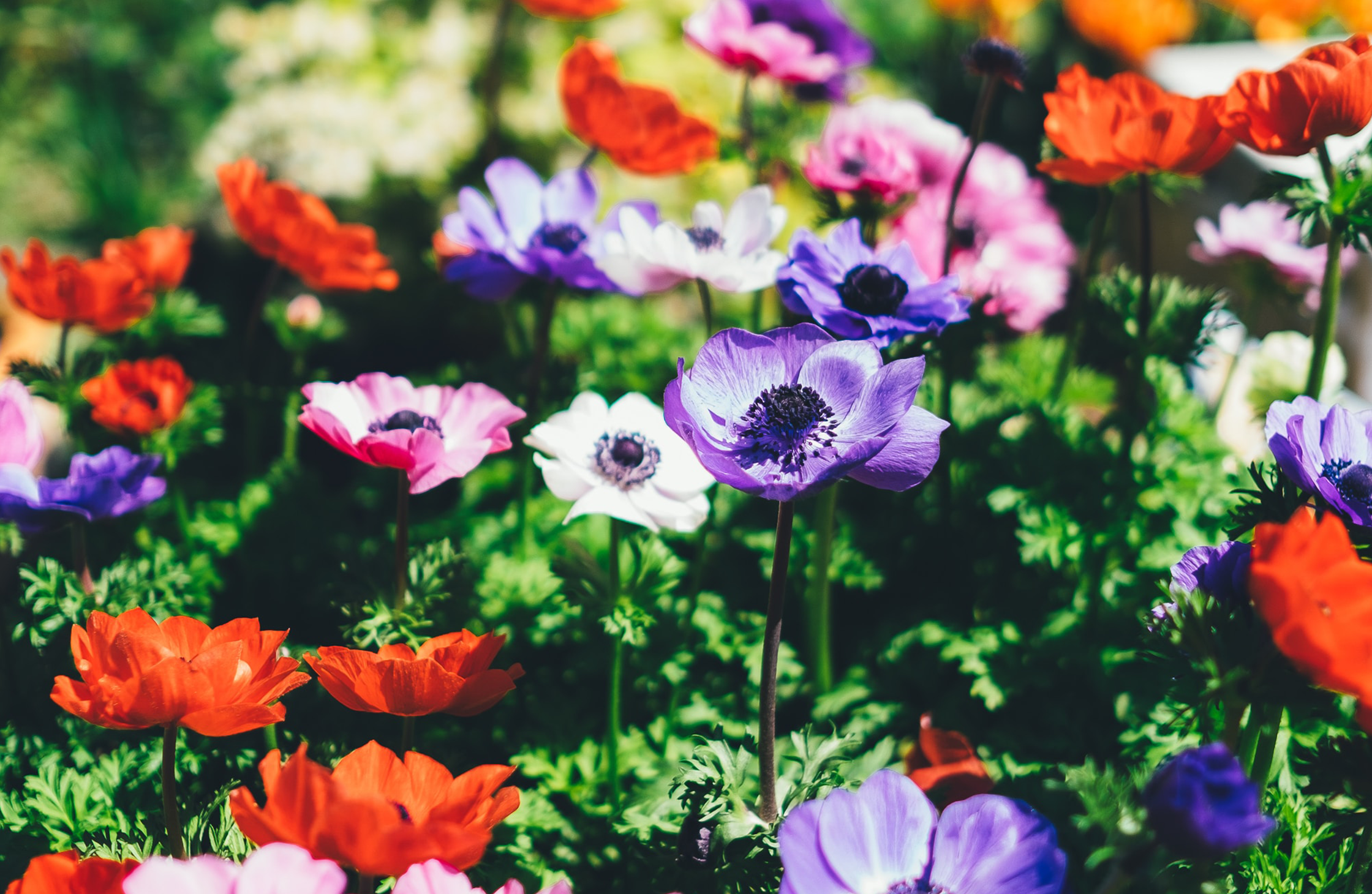Photo by Annie Spratt on Unsplash
Ornamental gardening finds its origin in ancient Rome, and 17th-century England and France continued the effort of cultivation — and inventing lawns — that, initially reserved for royalty and aristocracy, symbolized wealth and prestige. North America followed the trend, and the garden — manicured, with a controlled artistic design — became a symbol of suburban life.
It’s a deep cultural belief that a garden's beauty is a contrast with the natural environment. While we visit national parks to admire pure nature, we only take pride in our own garden when it has exotic and alien plants in it.
Can we make the shift?
Going native is beneficial in many ways, from water conservation to ecological diversity. But our culture of ‘keeping up with the Joneses’ and instant gratification could provide a persistent mental barrier.
The visual below shows the contrast: a native plant versus a conventional one at the time of purchase.

HomeOwners Associations (HOAs) can’t block going native
One barrier is removed: a law in Washington state requires HOAs to allow for drought resistant landscaping... with the mention that it “may include reasonable rules regarding the placement and aesthetic appearance.”
It may take a few more demo gardens in the Tri-Cities to shift minds.

